

This digital edition published by Parragon Books Ltd in 2016 and distributed by Parragon Inc. 440 Park Avenue South, 13th Floor New York, NY 10016 www.parragon.com/lovefood LOVE FOOD is an imprint of Parragon Books Ltd Copyright Parragon Books Ltd 2016 Copyright 2016 Hubert and Fischer with Reserved Font Name Rubik. Copyright 2016 with Reserved Font Name Bubblegum Sans. This Font Software is licensed under the SIL Open Font License, Version 1.1. This license may be found at http://scripts.sil.org/OFL LOVE FOOD and the accompanying heart device is a registered trademark of Parragon Books Ltd in the USA, the UK, Australia, India, and the EU. All rights reserved.
No part of this publication may be reproduced, stored in a retrieval system, or transmitted, in any form or by any means, electric, mechanical, photocopying, recording, or otherwise, without the prior permission of the copyright holder. 10 9 8 7 6 5 4 3 2 1 ISBN 978-1-4748-3555-8 Introduction by Fiona Hunter New recipes by Jane Hughes New photography by Tony Briscoe and Al Richardson Production by Fiona Rhys-Griffith Designed by Beth Kalynka Notes for the Reader This book uses standard kitchen measuring spoons and cups. All spoon and cup measurements are level unless otherwise indicated. Unless otherwise stated, milk is assumed to be whole, eggs are large, individual vegetables are medium, and pepper is freshly ground black pepper. Unless otherwise stated, all root vegetables should be peeled prior to using. The times given are an approximate guide only.
Preparation times differ according to the techniques used by different people and the cooking times may also vary from those given. Please note that any ingredients stated as being optional are not included in the nutritional values provided. The nutritional values given are approximate and provided as only a guide; they do not account for individual cooks, measuring skills, and portion sizes. The nutritional values provided are per serving or per item. While the publisher of the book and the original author(s) of the recipes and other text have made all reasonable efforts to ensure that the information contained in this book is accurate and up to date at the time of publication, anyone reading this book should note the following important points: Medical and pharmaceutical knowledge is constantly changing and the author(s) and the publisher cannot and do not guarantee the accuracy or appropriateness of the contents of this book. In any event, this book is not intended to be, and should not be relied upon, as a substitute for appropriate, tailored professional advice.
Both the author(s) and the publisher strongly recommend that a physician or other healthcare professional is consulted before embarking on major dietary changes. For the reasons set out above, and to the fullest extent permitted by law, the author(s) and publisher: (i) cannot and do not accept any legal duty of care or responsibility in relation to the accuracy or appropriateness of the contents of this book, even where expressed as advice or using other words to this effect; and (ii) disclaim any liability, loss, damage, or risk that may be claimed or incurred as a consequencedirectly or indirectlyof the use and/or application of any of the contents of this book.
JUICE
Nutritionists can often disagree, but there is one subject where there is no argumentthat most of us dont eat enough fruit and vegetables. Getting your daily dose of vitamins and other nutrients from natural sources, such as fruit and vegetables, is a much better idea than relying on expensive dietary supplements; not only do they taste better, but nutritionists believe that fruit and vegetables contain a variety of other compounds, such as phytochemicals, that help us stay healthy and disease-free. The benefits of eating a diet rich in fruit and vegetables is well-documented. It can reduce the risk of a whole host of medical conditions, including heart disease, stroke, certain types of cancer, cataracts, high blood pressure, dementia, and Alzheimers disease.
However, the benefits dont end there. Studies show that people who eat plenty of fruit and vegetables have fewer wrinkles and skin that looks more youthful. The U.S. government recommends adults have 2 cups of fruit (but cup of dried fruit counts as 1 cup, as does 1 cup of 100 percent fruit juice) daily plus 2 cups of vegetables if you are female or 3 cups for males, but few of useven people who love eating fruit and vegetablemanage to reach the target. Juices and smoothies offer the perfect solution. 

Drink your Way to Health & Vitality
Juices such as Vegetable Belly Treat are a great way to disguise vegetables, so even the most reluctant vegetable eater can enjoy them.


Drink your Way to Health & Vitality
Juices such as Vegetable Belly Treat are a great way to disguise vegetables, so even the most reluctant vegetable eater can enjoy them.
Variety may be the spice of life, but its also a vital ingredient in a healthy balanced diet and is particularly important when it comes to fruit and vegetables, because different fruit and vegetables contain different phytochemicals that work together to keep us healthy in different ways. Juices and smoothies are a wonderful way to expand the variety of fruit and vegetables in your diet. In this book, youll find juices, such as Beat the Morning Blues, that have been designed to boost energy and give you a healthy boost of good nutrition to start the day, plus others, such as Up the Anti and Green Goddess, that will help to nourish and boost your immunity system. Other chapters focus on drinks that will help soothe, hydrate, or detox your body. Whatever your reason for juicing or making a smoothie, this book provides plenty of options that are not just healthy but delicious, too.
Juices Vs Smoothies
Whats the Difference? Although in many ways juices and smoothies are similarboth are quick and easy to make, truly delicious, and packed with vitamins and mineralsthere are also important differences between the two.
Juices are made by squeezing the liquid from fruit and/or vegetables. Much of the fiber is left behind when you make juice, which means your body doesnt have to work so hard to digest juices and the nutrients are absorbed quickly into the blood stream. Smoothies are made by blending fruit and/or vegetables with other ingredients, such as milk, yogurt, nuts, or fruit juice. If you want to avoid dairy, you can use dairy-free alternatives, such as rice, oat, soy, or almond milk. 

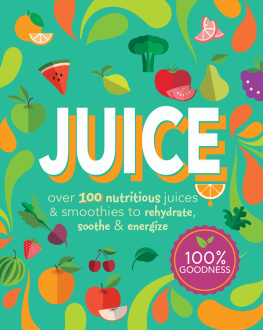
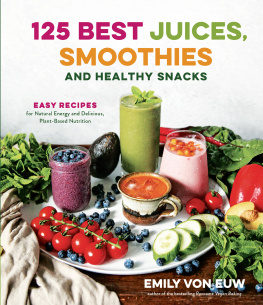

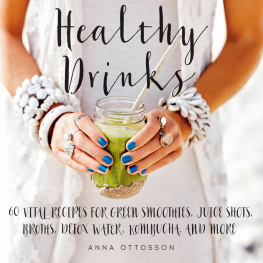
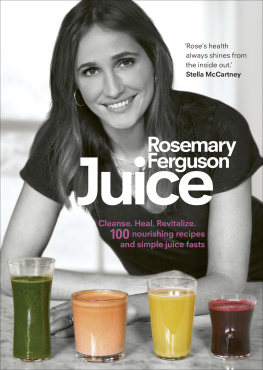
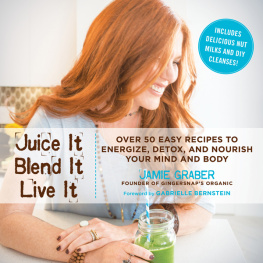
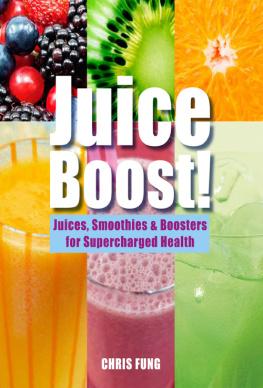

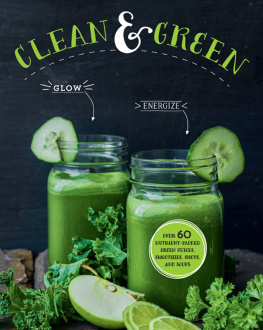
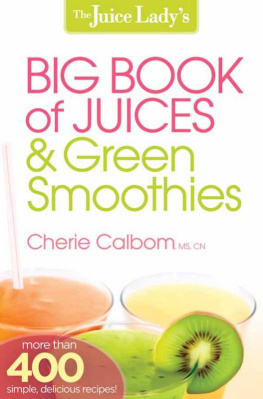


 This digital edition published by Parragon Books Ltd in 2016 and distributed by Parragon Inc. 440 Park Avenue South, 13th Floor New York, NY 10016 www.parragon.com/lovefood LOVE FOOD is an imprint of Parragon Books Ltd Copyright Parragon Books Ltd 2016 Copyright 2016 Hubert and Fischer with Reserved Font Name Rubik. Copyright 2016 with Reserved Font Name Bubblegum Sans. This Font Software is licensed under the SIL Open Font License, Version 1.1. This license may be found at http://scripts.sil.org/OFL LOVE FOOD and the accompanying heart device is a registered trademark of Parragon Books Ltd in the USA, the UK, Australia, India, and the EU. All rights reserved.
This digital edition published by Parragon Books Ltd in 2016 and distributed by Parragon Inc. 440 Park Avenue South, 13th Floor New York, NY 10016 www.parragon.com/lovefood LOVE FOOD is an imprint of Parragon Books Ltd Copyright Parragon Books Ltd 2016 Copyright 2016 Hubert and Fischer with Reserved Font Name Rubik. Copyright 2016 with Reserved Font Name Bubblegum Sans. This Font Software is licensed under the SIL Open Font License, Version 1.1. This license may be found at http://scripts.sil.org/OFL LOVE FOOD and the accompanying heart device is a registered trademark of Parragon Books Ltd in the USA, the UK, Australia, India, and the EU. All rights reserved. 

